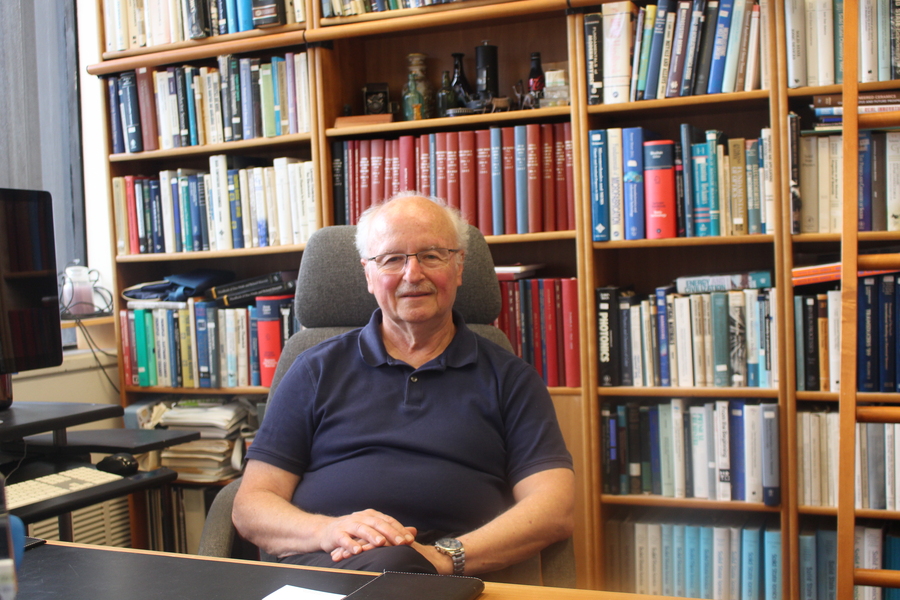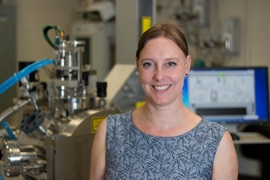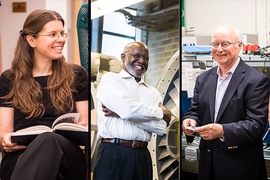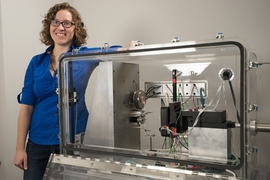When Harry L. Tuller was in grad school, his advisor had a few words of advice for the young scholar, then a Columbia University-trained electrical engineer.
“He said to me, ‘Harry, I like the idea that you have a background in semiconductors and electrical measurements. And what I want you to work on is ceramics,’” Tuller recalls. “Ceramics? The only ceramics I was familiar with were coffee cups and plates.”
Over the next nearly 50 years, Tuller, the RP Simmons Professor of Ceramics and Electronic Materials in the Department of Materials Science and Engineering, would become a world-leading researcher in electroceramics, a class of ceramic materials that enable technologies such as energy conversion, electronics, and communications. Earlier this year, Tuller and other researchers demonstrated for the first time how light can be used to switch on and off the passage of ions in devices such as fuel cells and lithium batteries, improving their performance.
In the spring, Tuller was named a 2022 Materials Research Society Fellow for his work in solid-state chemistry and electrochemistry, “leading to the in-depth understanding of multiple key materials, systems, and mechanisms,” as well as mentoring new scientists.
The Materials Research Society is a nonprofit professional organization for materials scientists, with 12,000 members worldwide. The MRS Fellows program recognizes researchers whose scientific contributions have advanced materials science and engineering.
Solid-state ionics
It’s the latest laurel of many in Tuller’s career — he’s an American Ceramics Society Fellow, a Fulbright Scholar, and a winner of the Egleston Medal, from his alma mater Columbia, to name a few.
“Professor Tuller is a world-leader in solid-state ionics and electrochemistry,” says MIT Professor Bilge Yildiz, who teaches in the departments of Materials Science and Engineering and Nuclear Science and Engineering. A research team including Yildiz and Tuller won the International Union of Materials Research Societies’ Somiya Award in 2012 for their work on ionic and mixed ceramics in fuel cells. “His genuine and endless enthusiasm in science is a source of motivation to many of us.”
Solid-state ionics examines the movement of ions, or charged atoms, in solids such as ceramics. Traditionally, ceramics were used primarily for their insulation properties. Think of the porcelain tip on a spark plug, the device in gasoline-powered motor vehicles that produces electric sparks to make gas burn. The tip wraps around the conductive central electrode that carries a charge to the combustion chamber. Ceramic material works because it insulates the electrode. It doesn’t transport a charge — or so it was thought.
Back in the 1970s, “the idea that you could actually move ions readily in a solid was unheard of really by 99.999 percent of the population,” says Tuller. The thought was, in the dense crystal structure that makes up ceramics, “the atoms are pretty much stuck in place.”
They’re not if you take advantage of what are known as defects. Those are interruptions of the arrangement of atoms in the crystal structure. Tuller describes a defect as a kind of vacancy, a missing atom. “If you have an atom sitting next to a missing atom, that atom can hop into the vacant site. And obviously, if it hops into the vacant site, the vacant site moves to the right,” carving out a path for an electrical charge to move through a solid, Tuller explains.
A general understanding of defect chemistry has triggered contemporary excitement about solid state batteries, which have the potential to be safer than, say, lithium-ion batteries that use liquid electrolytes, which can burn if something goes wrong.
Lifelong learner, mentor
Tuller’s accolades over the years haven’t strictly been about research. He was twice recognized by MIT’s "Committed to Caring" program, an honor given to professors identified by their grad students as outstanding mentors, in 2018 and 2020.
His students have described his teaching approach as personal and tailored to the individual, but throughout his years of teaching Tuller has maintained a consistent philosophy about learning.
“The best way to understand things is to figure out where it's going to have an impact in an application,” Tuller says. “If you just come about and say, ‘Oh, I want to understand how this happens,’ well, it is too vague, it's too broad. But when you try to solve engineering problems and try to understand how things work, that immediately provides an opportunity for exciting new insights.”
Tuller, who’s been at MIT for 47 years, gave up his tenured professorship July 1, but he will keep his office in Building 13 and will maintain his laboratories in his new position as a “professor post-tenure.” He’ll teach one course a semester in the coming year instead of two, including a graduate course on clean energy, and he’s expecting a new, five-year U.S. government grant to do research related to radiation detection beginning in September.
“So I can teach, I can write proposals, I can supervise students and postdocs, and I can collaborate and research,” Tuller says. Though he’s looking forward to taking a step back and spending more time with his family, “I'm certainly not ready to retire.”











